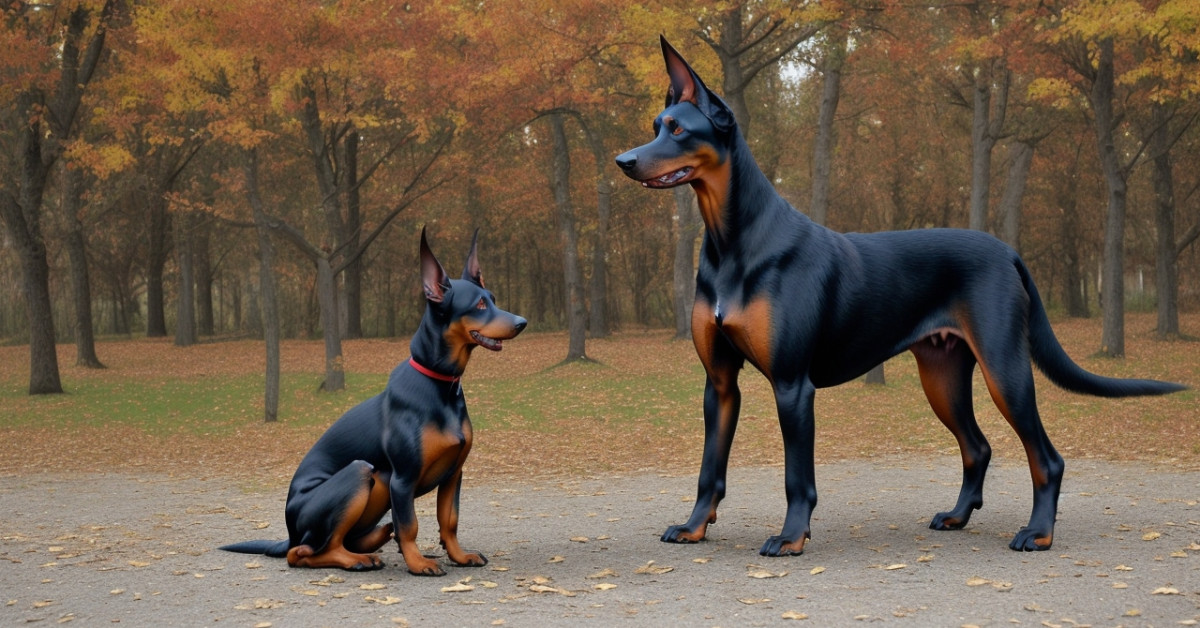American vs European Doberman: Unveiling Key Differences with Pictures—Are you ready to dive into the fascinating world of Dobermans? Discover the striking contrasts between the American and European Doberman as we reveal key differences illustrated with captivating images. Whether you’re a devoted dog lover or on the hunt for the perfect furry companion, this in-depth comparison will help you understand everything from temperament to appearance. Explore now to find out which Doberman reigns supreme!
Visual Differences

When comparing the American vs European Doberman, understanding the visual differences is vital for enthusiasts and prospective owners. The American Doberman exudes elegance and sleek sophistication, characterized by a more refined and slender build. In contrast, the European Doberman is known for its robust and muscular physique that highlights its powerful presence. Noteworthy visual differences include the American Doberman’s distinctly narrower head and long, graceful neck, compared to the European variety, which boasts a broader cranium and a more substantial neck.
Facial expressions also set these two types apart. The American Doberman often displays a gentler, more approachable countenance, whereas the European Doberman frequently carries a stern, alert look, indicative of its traditional use in protection and working roles across Europe. The differences continue with the ears and eyes; European Dobermans typically have slightly deeper set eyes and a firmer ear set when cropped, enhancing their formidable look.
Comparison through pictures emphasizes these visual differences, showing side-by-side the stark contrast in their silhouettes and overall demeanor. This photographic evidence aids in appreciating the unique attributes of both variations, helping individuals to make informed decisions about which type best suits their preferences and lifestyle.
At a Glance

The American vs European Doberman: Unveiling Key Differences with Pictures highlights the distinct characteristics of these two Doberman variations. At a glance, both types share the iconic sleek, muscular build and noble appearance. However, there are notable differences that set them apart.
Firstly, the American Doberman is slightly smaller, more refined, and built for agility, often excelling in show rings. They possess a lighter bone structure and a more elegant, elongated neck, contributing to a polished look. In contrast, the European Doberman is robust and sturdier, designed for working dog roles. Their broader chests, thicker bones, and more muscular physique make them ideal for protection tasks.
Temperament-wise, American Dobermans tend to be more docile and suited for family life, whereas European Dobermans are often more driven and assertive, reflecting their working dog heritage. Both types are intelligent and loyal but require proper training and socialization.
Visual aids can lend clarity; at a glance, you can see the refinement of the American Doberman versus the rough-and-ready build of their European counterparts. While both breeds offer unique attributes, the choice between an American or European Doberman often hinges on the specific needs and lifestyle of the owner.
American Doberman Overview
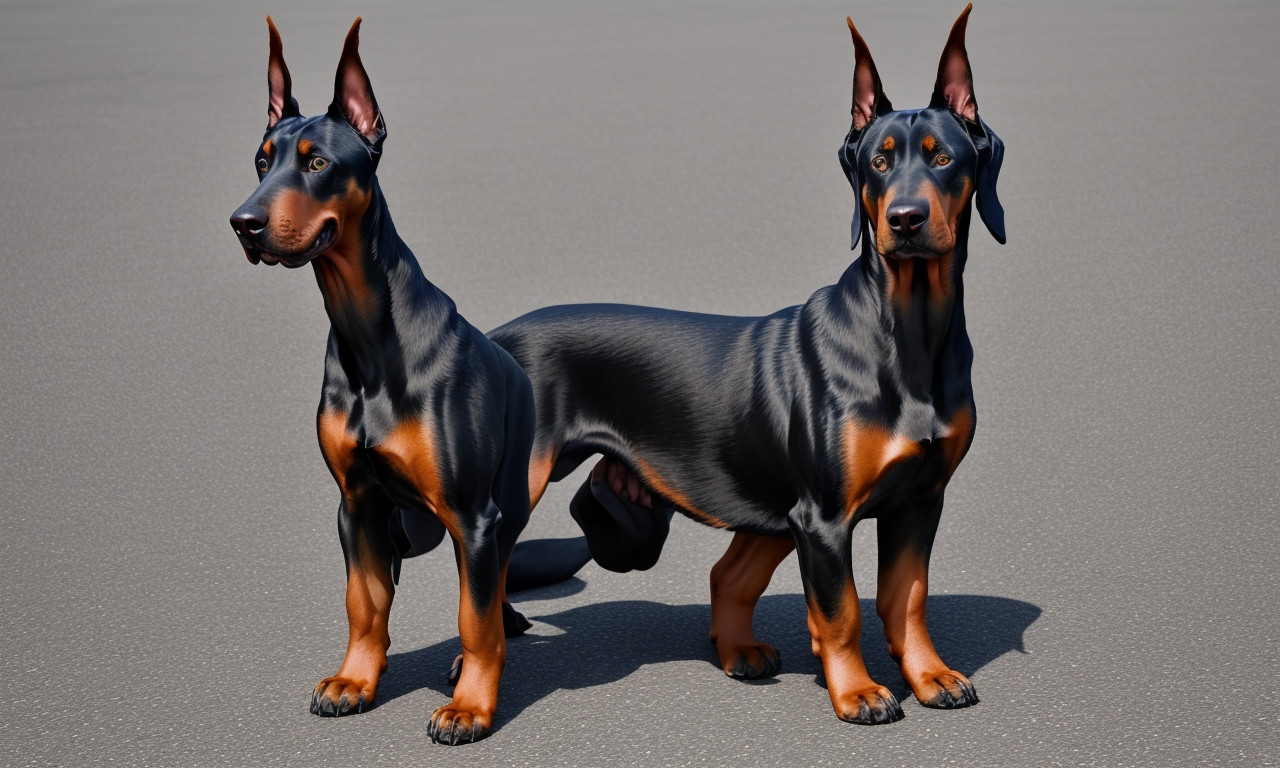
The American Doberman Overview provides an in-depth look at the distinguishing features, temperament, and physical characteristics that set this breed apart from its European counterpart. The American Doberman stands out with its sleek, elegant physique and slightly more refined frame. Known for their agility and speed, these dogs are often seen excelling in canine sports and obedience competitions.
In contrast to the European Doberman, which tends to have a bulkier build and a more pronounced head, the American Doberman is bred with an emphasis on an aesthetically pleasing appearance, making them popular in dog shows. Their coat is typically shorter and glossier, adding to their refined look. Despite these physical differences, the American Doberman maintains the breed’s signature loyalty, intelligence, and protective nature.
When it comes to temperament, the American Doberman may exhibit a slightly softer demeanor, making them more adaptable as family pets. However, potential owners should be cognizant of their high energy levels and need for regular mental and physical stimulation.
Visual aids depicting both the American and European Doberman can highlight these differences, offering a clearer understanding of what sets them apart. By examining side-by-side pictures and detailed descriptions, enthusiasts and prospective owners can better appreciate the unique qualities of the American Doberman.
Personality / Character

American and European Dobermans, while sharing a common lineage, exhibit distinct differences in terms of appearance and personality. The American Doberman is generally sleeker and more refined, often preferred for its elegance and agility in the show ring. In contrast, the European Doberman tends to be sturdier and more muscular, aligning with its historical role as a working dog.
Personality traits further distinguish these two breeds. American Dobermans are known for their loyalty and often showcase a more laid-back and friendly demeanor, making them excellent companions for families and individuals alike. They thrive in environments where they can lavish attention on their owners and participate in various family activities.
European Dobermans, however, are renowned for their strong work ethic and assertive character. These dogs are typically employed in roles that demand high levels of discipline and alertness, such as police work or competitive obedience. Their heightened drive and protective instincts make them ideal for security purposes, but they also require experienced handlers to manage their vigorous personalities.
Both American and European Dobermans possess intelligence and trainability, yet their differing personalities cater to distinct lifestyles and needs. By understanding these key differences, potential owners can make informed decisions best suited to their living situations, ensuring a harmonious relationship with their chosen Doberman. You can read more about Vizsla Labrador Mix
Training

The American vs European Doberman distinction often sparks interest among dog enthusiasts, especially regarding their training needs. Though both share the same lineage, these two breeds exhibit notable differences that influence their training. American Dobermans are typically bred for companionship and show, displaying a more refined and elegant appearance. Their temperament is generally softer, making them more adaptable to family settings and less demanding in training sessions. Picture a graceful companion that thrives on positive reinforcement and routine exercises, ideal for novice dog owners.
In contrast, the European Doberman is bred for work and protection, resulting in a more robust and muscular build. Their instinctive drive to guard and their high energy levels require rigorous and consistent training from an early age. Training a European Doberman involves advanced obedience techniques, agility exercises, and mental stimulation to keep them engaged and well-behaved. Imagine a vigilant protector that excels in challenging tasks and complex commands.
Ultimately, understanding the distinctive training requirements of American vs European Dobermans is essential for prospective owners. Accurate pictures depicting the physical and behavioral differences further aid in making an informed choice. Proper training tailored to each breed ensures a harmonious relationship and a well-adjusted canine companion.
Health & Care

American and European Dobermans, though sharing common ancestry, exhibit distinctive traits in both appearance and character. European Dobermans are often more robust, showcasing a muscular physique and thicker bones, which contributes to their reputation as working dogs, particularly in police and military roles. Their American counterparts tend to be sleeker and more elegant, with a streamlined build that makes them popular in dog shows.
Health & Care also differ notably between these two varieties. European Dobermans, due to their stockier build, often require rigorous physical activity to maintain optimal health, and they are prone to fewer genetic health issues compared to American Dobermans. In contrast, American Dobermans generally demand more frequent health check-ups due to a higher risk of genetic conditions such as dilated cardiomyopathy and hip dysplasia.
From a care perspective, both require a balanced diet, regular exercise, and mental stimulation to thrive. However, due to their different physiques and energy levels, their exercise routines might vary; European Dobermans might benefit more from strength-based activities, while American Dobermans may excel in agility-based exercises. Ensuring proper Health & Care for either breed involves understanding these nuanced differences, which can be visually appreciated in comparative photos, highlighting their unique characteristics and needs as beloved companions.
Exercise

Understanding the differences between American and European Dobermans is crucial for making an informed choice about the breed that best matches your lifestyle, particularly when it comes to exercise needs. Both versions of this noble breed share a commitment to loyalty and protection, yet their physical and psychological attributes can differ significantly.
The American Doberman is generally sleeker and more streamlined, optimized for agility and companionship. Their exercise needs are moderate but consistent, including daily walks, playtime, and occasional rigorous activities to maintain their trim physique. Pictures often reveal their less bulky frame compared to their European counterparts.
In contrast, European Dobermans display a more robust and muscular build, bred initially for work and protection. Their exercise requirements are generally more demanding, necessitating intense physical activities such as running, obedience training, and even occupation-specific tasks like search and rescue exercises. Photographs typically showcase their sturdier, more imposing presence, which aligns with their historical roles.
Both American and European Dobermans benefit immensely from exercise regimes tailored to their physiques and temperaments. Understanding these differences through visual aids and comprehensive knowledge can help potential owners make educated decisions, ensuring their Doberman leads a healthy, happy life. Whether American or European, the key lies in fulfilling their unique exercise needs.
Suitable For:

American and European Dobermans might appear similar, but discerning dog enthusiasts will notice critical distinctions when examining them closely. Pictures accompanying these differences reveal not just physical variations but also temperament and utility adjustments tailored to their origins. American Dobermans, Suitable For: families and show enthusiasts, possess a more slender frame and an evenly tempered demeanor, often embodying elegance and compliance in competitive settings. Their gentler nature makes them perfect companions for homes where adaptability and sociability are prized traits.
On the other hand, European Dobermans are Suitable For: working environments that demand robustness and high energy output. These dogs typically showcase a bulkier build and a formidable presence, reflecting their lineage of intense work and protection roles. Their drive and focus are unparalleled, making them exceptional choices for security and disciplined training programs. Examining side-by-side pictures clearly emphasizes these differences: the American counterpart’s refined structure versus the European’s sturdy and muscular physique.
In essence, the divergence in the breeds isn’t merely aesthetic but functional, each type carefully bred to excel in environments where they are most Suitable For: whether it’s a serene family setting or a rigorous working condition. These visual and behavioral distinctions provide invaluable insights for potential Doberman owners in choosing the right dog that aligns with their lifestyle and needs.
European Doberman Overview
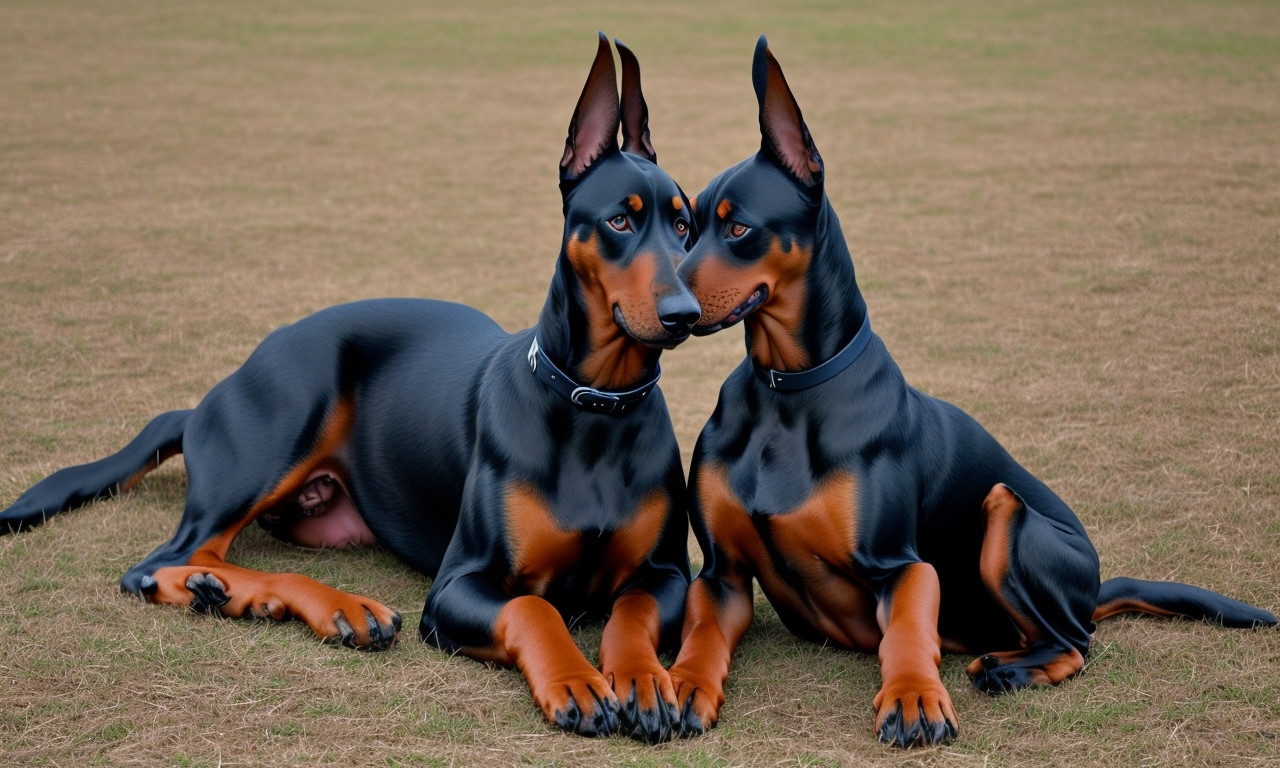
The European Doberman Overview reveals significant distinctions between American and European Dobermans that are evident in both physical characteristics and temperaments. Visually, European Dobermans are more robust and muscular, embodying a solid, athletic build, whereas American Dobermans appear leaner and more streamlined. European Dobermans have a broader chest, thicker bone structure, and a straighter back, contributing to their powerful appearance.
Temperamentally, European Dobermans are known for their strong work drive, making them highly efficient in roles such as guard dogs, police, or military canines. Their temperament is generally more assertive and protective compared to their American counterparts, who are often regarded as more sociable and better suited for family environments.
Color and coat quality also mark differences; European Dobermans often exhibit deeper, richer hues and a denser coat. The breeding standards emphasize endurance and functionality, ensuring that European Dobermans maintain their stamina and working capability. Visual comparisons highlight these attributes clearly, illustrating how European Dobermans maintain a traditional working dog essence, while American Dobermans adapt more to companion roles. These careful distinctions compile the essential European Doberman Overview, offering insights into the breed’s diverse potentials and specialized traits.
Personality / Character

American vs European Dobermans exhibit notable differences in personality and character that can be discerned through careful observation, supported by pictures highlighting each variety’s unique traits. The American Doberman tends to have a more refined and elegant appearance, often characterized by a leaner body and a slightly more elongated face. These physical attributes often coincide with a more subdued and calm personality. American Dobermans are typically bred for companionship and show, making them ideal for family settings and those who wish for a more relaxed pet.
On the other hand, European Dobermans are generally more robust and muscular, with a more square-shaped head and a thicker neck. Bred predominantly for work such as protection and security, European Dobermans exhibit a more assertive and confident character. Their temperaments are often more driven and intense, showcasing high energy levels and a strong need for physical and mental stimulation.
When comparing the two types through pictures, the distinct differences in physique can be readily seen, reflecting their respective personalities. The graceful lines of an American Doberman contrast with the powerful build of a European Doberman, serving as a visual representation of their diverse character traits and the roles they excel in.
Exercise

The American vs. European Doberman showcases intriguing distinctions, and understanding these differences can be invaluable for prospective owners. Pictures vividly illustrate that European Dobermans possess a more robust build, characterized by a broader chest and a generally more muscular physique. In contrast, American Dobermans exhibit a sleeker, more elegant appearance, often with a narrower frame.
One significant aspect where these two variants diverge is in their exercise requirements. European Dobermans have higher endurance levels and often require more rigorous exercise routines. This includes activities like long-distance running, agility training, and even protective dog sports, which not only keep them physically fit but also provide mental stimulation.
On the other hand, American Dobermans, while still active and energetic, may have slightly lower exercise needs. Their routines can be more flexible, often consisting of brisk walks, playtime in the yard, and structured obedience training. It’s essential to tailor the exercise regimen to meet their specific needs, as both types thrive on ample physical activities to maintain their health and well-being.
In sum, whether you’re drawn to the powerful presence of the European Doberman or the refined elegance of the American Doberman, both require dedication to exercise, ensuring these intelligent and loyal companions lead fulfilled lives.
Training

The American and European Doberman varieties exhibit distinct differences, making each unique in its own right. Physically, European Dobermans tend to have a more robust build with a dense, muscular frame, while American Dobermans are sleeker, embodying a more elegant appearance. Understanding these differences is crucial, especially when it comes to training.
Training plays a pivotal role in the development of both American and European Dobermans. European Dobermans are often considered more assertive and protective, traits stemming from their heritage as working dogs. This makes them highly responsive to rigorous training regimes that focus on obedience, protection work, and advanced commands. Conversely, American Dobermans, known for their athleticism and grace, excel in agility and show training. Their temperaments are generally more compliant, making them easier to train for obedience and socialization purposes.
Whether you choose an American or European Doberman, tailored training methods are essential to harness the unique characteristics of each type. Incorporating visual aids, such as pictures comparing the two varieties during training sessions, can enhance understanding and effectiveness. These images can demonstrate posture, alertness, and reaction to commands, further underlining the importance of specialized training for each breed type.
In conclusion, the key differences between American and European Dobermans are not merely physical but also extend to their training needs. Selecting the right training approach for your Doberman, attuned to its specific breed characteristics, ensures a well-behaved and balanced companion.
Health & Care

When comparing the American vs European Doberman, understanding their distinguishing characteristics in terms of health & care is crucial. American Dobermans are typically leaner and more agile, often preferred for conformation shows due to their sleek build and elegant appearance. In contrast, European Dobermans are robust and stockier, bred with a focus on workability and endurance.
Health & care considerations also vary between these two types. European Dobermans generally require a rigorous exercise routine and mental stimulation to keep them engaged, given their working-dog lineage. On the other hand, American Dobermans, while still active, may adapt more easily to domestic life, provided they get ample daily exercise.
When it comes to genetic health, the European Doberman often boasts a lower incidence of dilated cardiomyopathy (DCM), a heart condition common in the breed, as European breeding programs frequently emphasize health testing. However, it’s critical to source both types from reputable breeders who prioritize health to avoid issues like hip dysplasia and inherited diseases.
Nutrition plays a significant role in their health & care. Both types benefit from high-quality, balanced diets tailored to their activity levels. Regular vet check-ups and a keen eye for any changes in behavior or physical condition are essential to ensure both American and European Dobermans lead healthy, fulfilling lives. Pictures often reveal their subtle physical differences, underscoring the unique charm of each type while highlighting their shared noble demeanor.
Suitable For:

The American vs European Doberman debate captivates dog enthusiasts worldwide, as they seek to unveil the key differences between these two distinct lineages. Both types share striking looks and a loyal temperament, but their distinctions cater to different preferences, making them suitable for varied lifestyles. In the American Doberman, you’ll often find a sleeker, elegant build paired with a more subdued temperament, ideal for suburban life and families. In terms of appearance, pictures reveal these Dobermans as refined and agile, emphasizing their beauty and grace. In contrast, the European Doberman is characterized by a more robust, muscular physique, showcasing power and endurance, qualities that align perfectly with working roles and intensive training. Their assertive nature requires experienced handlers, making them suitable for those pursuing protection work or extensive outdoor activities.
When considering suitability, the American Doberman tends to adapt well to indoor living and a moderate exercise routine, making them the perfect companions for those with a more relaxed lifestyle. Conversely, the European Doberman demands consistent, rigorous physical and mental challenges, making them suitable for individuals or families committed to an active, disciplined lifestyle. By examining pictures and key traits, potential owners can make informed decisions about which Doberman best fits their environment and expectations.
American vs European Doberman Coloring
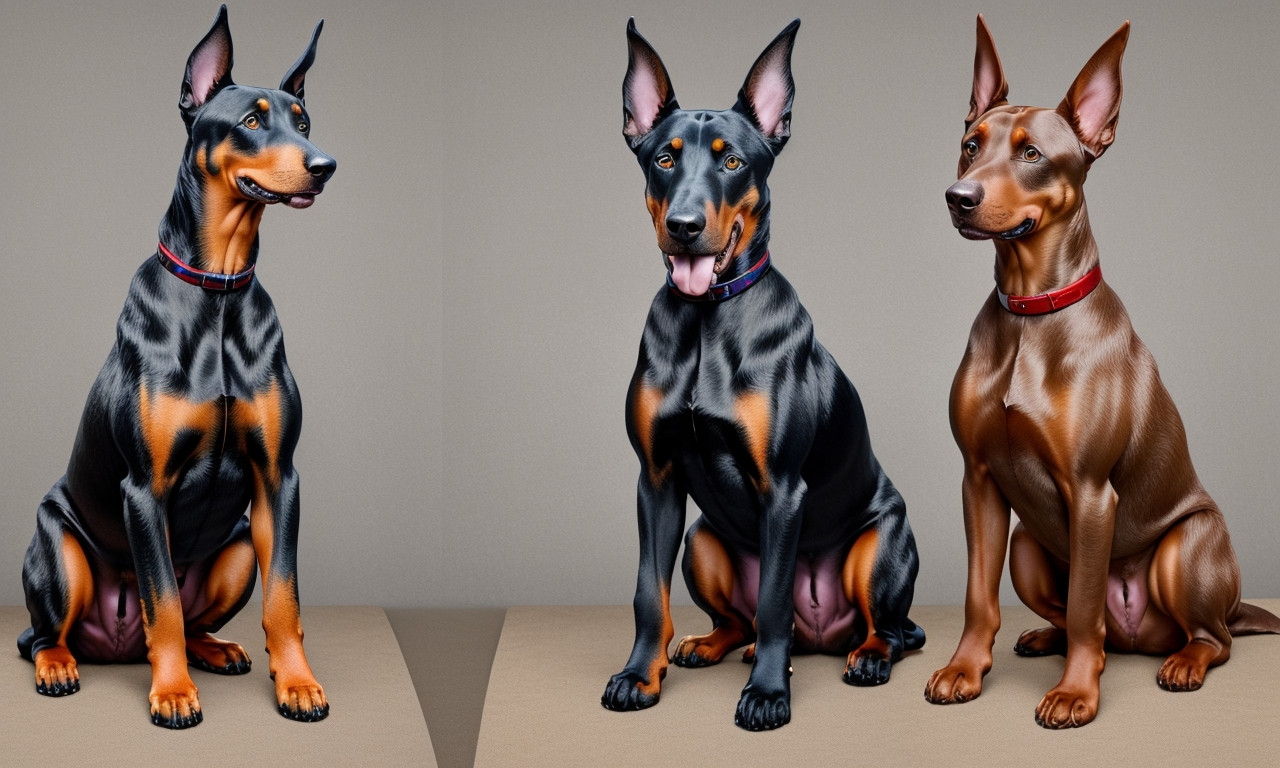
The American versus European Doberman debate often centers around various characteristics, including coloration patterns. When comparing American vs European Doberman coloring, certain distinctions become apparent. American Dobermans usually display a sleeker, more refined coat that leans towards a black and rust coloration, though shades of fawn, blue, and red are also prevalent.
European Dobermans, on the other hand, often exhibit a stockier and more robust physique with a denser coat that also typically comes in black and rust, but with a markedly intense hue. The black coat of a European Doberman is usually deeper and more lustrous, whereas the rust markings are more saturated. Their coat tends to have a coarser texture as well, giving the dog a rugged appearance.
When viewing pictures of these two breeds side by side, the American Doberman’s lighter and more elegant coat stands in contrast to the European Doberman’s darker, more vivid coloration. This difference in coloring contributes significantly to the overall aesthetic and visual appeal of each breed. By examining the images, enthusiasts can appreciate the unique characteristics that set American vs European Doberman coloring apart, emphasizing the individuality and beauty of each type.
Which Breed Is Right for You?
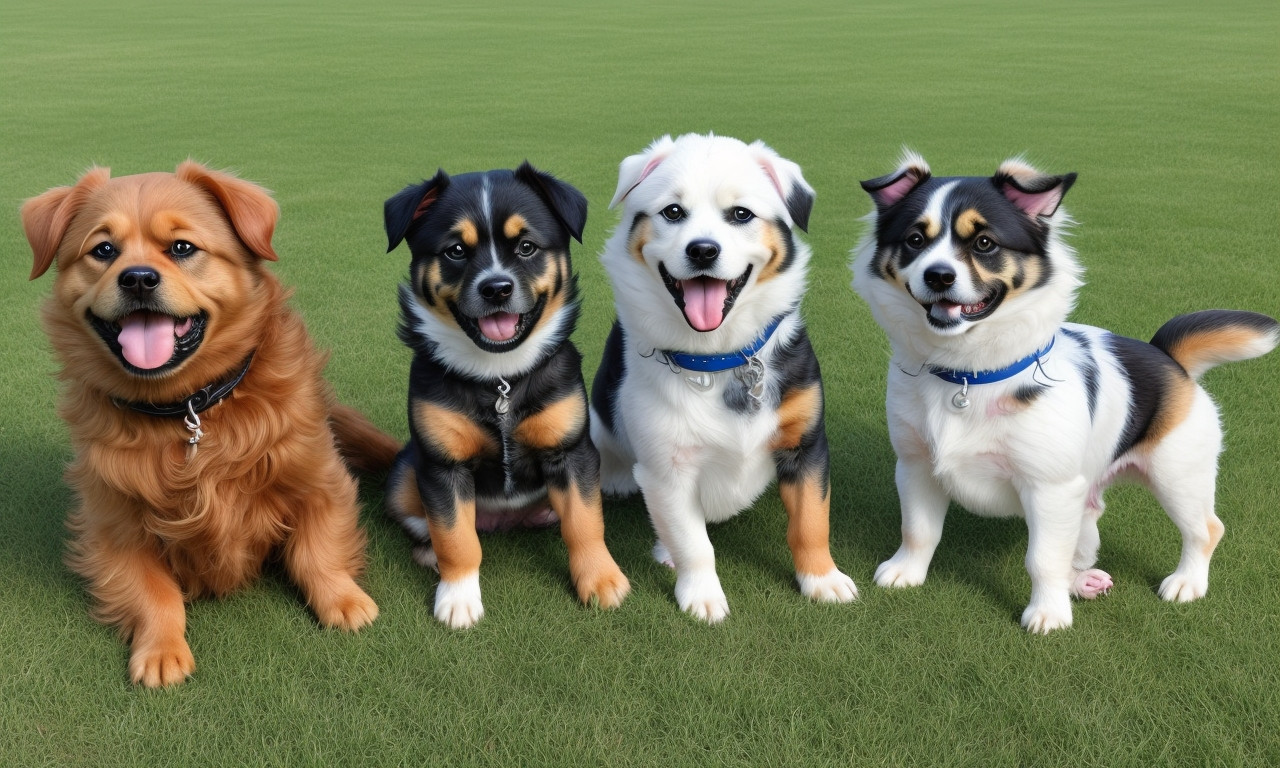
Understanding the distinctions between American and European Dobermans is essential when deciding which breed is right for you. Both variations of this noble breed exude elegance and offer unparalleled loyalty, yet each possesses unique traits catering to different needs and preferences.
American Dobermans typically exhibit a sleeker, more refined appearance, often favored in show rings. They boast a leaner body, longer neck, and a generally more elegant posture, making them visually striking. These Dobermans are known for their friendly demeanor and adaptability, being well-suited for families and companionship roles.
In contrast, European Dobermans are robust and muscular, bred primarily for work and protection. Their stockier build, broad chest, and strong bone structure highlight their physicality and endurance. These dogs are often employed in security roles and excel in various working dog capacities. Their temperament tends to be more intense, reflecting their lineage’s emphasis on strength and guarding instincts.
Deciding which breed is right for you ultimately depends on your lifestyle and needs. If you seek a companion with a graceful appearance and affable nature, the American Doberman may be ideal. Conversely, if protection and physical prowess are priorities, the European Doberman stands out as the better choice. Visual aids illustrating these differences can further assist in making an informed decision.
